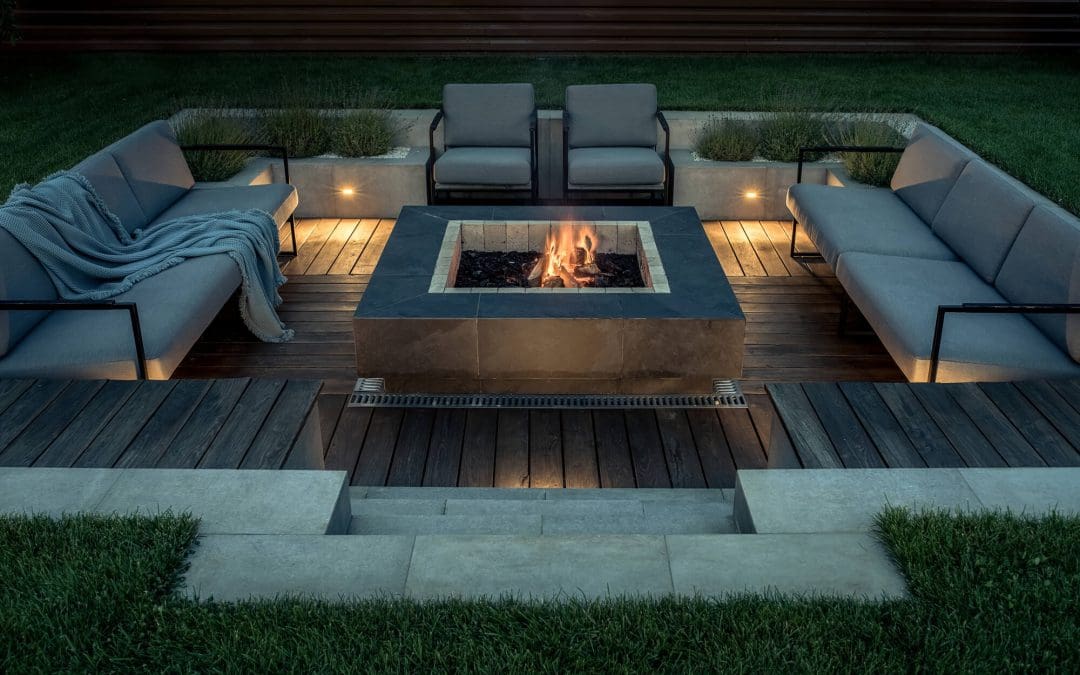A fire pit can turn any backyard into the perfect gathering spot. Whether roasting marshmallows, sharing stories, or just soaking up the cozy glow, a fire pit brings people together. But before you light those logs or flip on the gas, it’s important to keep fire pit safety in mind. Fires are fun but can also be dangerous if not handled properly. Staying safe is easy with a few simple precautions.
Pick the Right Spot for Fire Pit Safety
Before you even think about starting a fire, make sure your fire pit is in a safe place. Keep it on a solid, non-flammable surface like stone, brick, or concrete—never on grass or a wooden deck unless you have proper protection. It should also be at least ten feet away from houses, fences, trees, or anything that could catch fire.
If you’re using a portable fire pit, put it on level ground so it doesn’t tip over. If it’s a windy night, skip the fire altogether since strong gusts can send sparks flying.
Light It the Right Way
When it’s time to start your fire, patience is key. Never use gasoline, lighter fluid, or any other accelerant—these can cause big, unpredictable flare-ups. Instead, use dry kindling, fire starter sticks, or crumpled newspaper. If you have a gas fire pit, always follow the manufacturer’s instructions.
When you’re done for the night, don’t just walk away and hope the fire burns itself out. For wood-burning pits, spread out the embers and douse them with water until everything is cool to the touch. If you have a gas fire pit, turn off the gas completely and let it cool down before covering it.
Keep Flames Under Control
Bigger isn’t always better when it comes to fires. A fire that’s too big can quickly get out of hand. Keep the flames at a manageable height—about two feet or less. Too much wood in the fire pit can lead to sparks and embers escaping. If you’re using a gas fire pit, avoid turning the flames up too high to prevent overheating.
Always Keep an Eye on the Fire
Never leave a fire unattended, even if it seems small. Fires can spread quickly, and all it takes is a little wind to send embers drifting into dry grass or onto a deck.
If you have kids or pets, set some ground rules. Make a “no-go” zone around the fire pit, at least three feet in all directions. Teach kids to respect the fire and never throw things into it. Pets should be kept at a safe distance, too.
Always keep something nearby to put out the fire in case things get out of hand. A bucket of water, a garden hose, or a fire extinguisher will do the trick. If you’re using a wood-burning fire pit, consider using a metal screen to keep sparks contained.
Use the Right Fuel and Take Care of Your Fire Pit
For a wood-burning fire pit, stick to dry, seasoned wood. Wet or green wood creates a lot of smoke and can make for an unpleasant experience. Never burn trash, leaves, or treated wood—these can release harmful chemicals.
If you have a gas fire pit, check the hoses and connections regularly for leaks or damage. Keep the burner and ignition system free of dirt and debris. When you’re not using it, cover your fire pit to protect it from the elements and extend its lifespan.
Know the Rules for Fire Pit Safety
Before you light up, check your local regulations. Some areas have fire restrictions, especially in dry seasons when the risk of wildfires is high. There may also be rules about how close a fire pit can be to buildings or what type of fuel you’re allowed to use. It’s always better to be safe than sorry.
A fire pit can be a great addition to your outdoor space, but safety should always come first. By taking a few simple precautions, you can enjoy warm, relaxing fires without any worries. Stay safe, stay cozy, and make the most of your fire pit!
Fire Pit Safety FAQs
Can I use my fire pit on a wooden deck?
Yes, but you’ll need to take extra precautions. Put a fireproof mat or heat-resistant pad underneath it, and make sure there’s plenty of space between the fire pit and any railings or overhangs. Gas fire pits are safer for decks than wood-burning ones.
What if it’s windy?
If it’s a windy night, it’s best to skip the fire. Wind can carry embers and increase the risk of things catching fire. If you really want to use your fire pit, place it in a spot that’s shielded from the wind and keep the flames small.
Can I cook over a fire pit?
Absolutely! Many fire pits are great for cooking, whether you’re toasting marshmallows, grilling hot dogs, or even using a grill grate for more serious meals. Just make sure to use untreated wood or charcoal, and clean your fire pit afterward to prevent grease buildup.
Is it okay to leave a fire burning overnight?
Nope. Never leave a fire unattended. Even if it looks like it’s dying down, embers can stay hot for hours and reignite. Always fully extinguish the fire before heading inside or going to bed.
How do I store my fire pit for the winter?
If you won’t be using your fire pit during the colder months, clean out any ash or debris and cover it with a weatherproof cover. For gas fire pits, shut off the fuel supply and disconnect propane tanks if needed. If it’s portable, consider moving it to a garage or shed for extra protection.
Crossroads Home Inspections provides home inspections in St. Louis and the surrounding area. Contact us to schedule our services.

